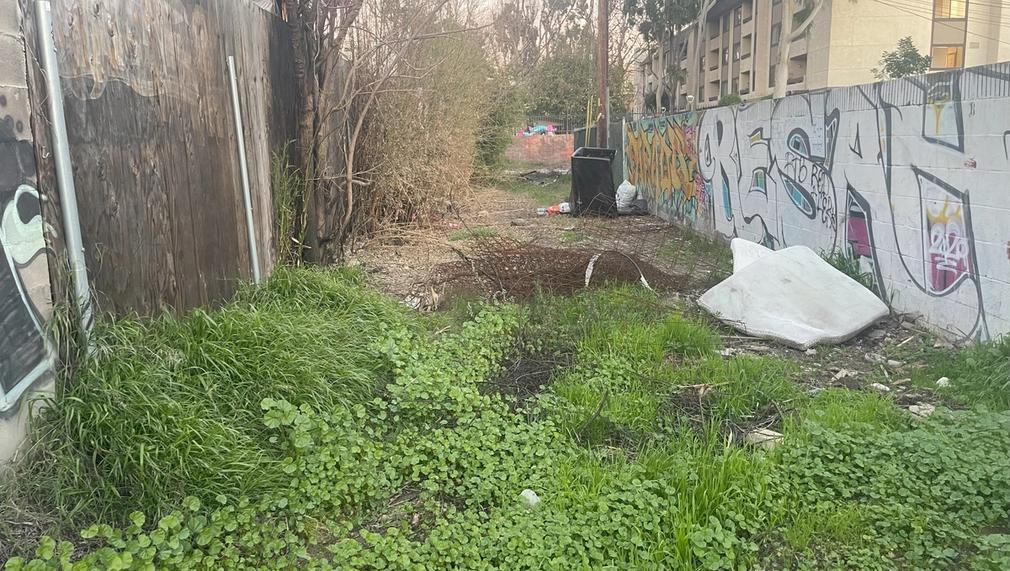Connecting Communities through Green Alleys
The Green Alley Project aims to transform underutilized alleyways in Los Angeles into vibrant, sustainable community spaces. By incorporating permeable surfaces, urban gardens, solar streetlights, and public art, the project will enhance environmental sustainability, improve safety, and foster community engagement. This initiative will create inviting green spaces that promote social interaction, sustainable living, and economic development in urban neighborhoods.

What is the primary issue area that your application will impact?
Green space, park access, and trees
In what stage of innovation is this project, program, or initiative?
Research (initial work to identify and understand the problem)
What is your understanding of the issue that you are seeking to address?
The issue we seek to address is the underutilization and neglect of urban alleyways in Los Angeles, which currently contribute to environmental, social, and economic challenges. These alleyways often suffer from poor drainage, inadequate lighting, and lack of green space, leading to flooding, increased urban heat, and safety concerns. These spaces are not utilized for community engagement or economic activities, missing opportunities to enhance the quality of life for residents. By transforming these alleys into green, sustainable spaces, we aim to mitigate environmental impacts, improve safety, and create vibrant community hubs that foster social interaction and economic development.
Describe the project, program, or initiative this grant will support to address the issue.
The Green Alley Project will transform neglected alleyways in Los Angeles into sustainable, multifunctional community spaces. This initiative will implement permeable surfaces to improve drainage and reduce flooding, urban gardens to promote sustainable living and provide fresh produce, and solar streetlights to enhance safety and reduce energy consumption. We will remove graffiti, install aesthetically pleasing fences, and create seating areas to foster social interaction and community engagement. By addressing environmental concerns and revitalizing these spaces, the project aims to create vibrant green alleys that enhance the quality of life for residents and promote economic development in urban neighborhoods.
Describe how Los Angeles County will be different if your work is successful.
If the Green Alley Project is successful, Los Angeles County will experience a significant transformation in its urban landscape. Neglected alleyways will become vibrant, sustainable community spaces that enhance environmental health by improving storm water management and reducing urban heat islands. Residents will benefit from safer, well-lit pathways and accessible green spaces that promote social interaction and community engagement. The addition of urban gardens will provide fresh produce and educational opportunities, while improved aesthetics and functionality will attract economic activity, boosting local businesses and property values. Overall, the project will promote a more connected, resilient, and livable Los Angeles County.
What evidence do you have that this project, program, or initiative is or will be successful, and how will you define and measure success?
The Green Alley Project aims to transform underutilized alleyways in Los Angeles into vibrant, sustainable community spaces. Success will mean reduced urban flooding and heat effects, enhanced biodiversity, improved safety, and increased community engagement. By creating inviting green spaces, we anticipate higher property values and local economic growth.
In the long term, we plan to scale the project across Los Angeles County and other cities. This will involve building partnerships, launching educational campaigns, and developing a replicable toolkit for various urban contexts.
We will measure success through:
Environmental Impact: Reduced flooding and lower temperatures.
Safety and Usability: Lower crime rates and positive resident feedback.
Community Engagement: High participation rates and satisfaction.
Economic Indicators: Increased property values and business growth.
Sustainability: Long-term maintenance and community ownership.
Approximately how many people will be impacted by this project, program, or initiative?
Direct Impact: 2,000.0
Indirect Impact: 10,000.0